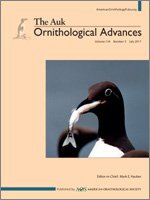Although it has been strongly implied that studies on structural function might resolve certain conflicting theories regarding the huge variability of coloration in avian eggs, including maculation, the fundamental physiological question about the functional role of eggshell speckling in the maternal deposition of micronutrients into maculated (pigment spots) and plain (unpigmented) eggshell regions remains largely unanswered. We measured (within the same egg) the concentrations of 2 micronutrients, the staple components of avian eggshells (calcium and magnesium), and 6 trace elements (copper, manganese, iron, cobalt, cadmium, and lead) in maculated (a superficial layer of brown pigment) and unpigmented areas of eggshells in 2 groups of Japanese Quail (Coturnix coturnix japonica) eggs representing 2 extremes of eggshell coloration: those with darker eggshells and more extensive pigment spots vs. those with bright eggshells and small, more clearly demarcated pigment spots. We found evidence that the concentrations of calcium and magnesium and of 2 trace elements (copper and cadmium) in both types of egg were significantly higher in speckled eggshell areas (where the shells were also significantly thicker) than in unpigmented ones. Conversely, lead (a toxic element) peaked markedly in the plain areas of eggshells compared with the speckled ones, whereas the concentrations of the 3 other trace elements (manganese, iron, and cobalt) measured in the speckled and unpigmented eggshell regions were variable and dependent on egg coloration. Our results give a clear indication that egg maculation can play a functional role in the chemistry of avian eggs, one that enables females to distribute micronutrients and trace elements into pigment spots and unpigmented regions of an eggshell to varying extents. This presumably represents a mechanism permitting prompt physiological adjustment to varying levels of maternal resources. It is possible that elements sequestered into protoporphyrin speckles are not further utilized by developing embryos; this might be a form of physiological chemoprotection through the disposal or deactivation of certain elements in pigment speckles, which do not (or only marginally) contribute to the biochemical processes of embryogenesis.
How to translate text using browser tools
16 June 2017
Speckled and plain regions of avian eggshells differ in maternal deposition of calcium and metals: A hitherto overlooked chemical aspect of egg maculation
Grzegorz Orłowski,
Przemysław Pokorny,
Wojciech Dobicki,
Ewa Łukaszewicz,
Artur Kowalczyk

The Auk
Vol. 134 • No. 3
July 2017
Vol. 134 • No. 3
July 2017
calcium
egg maculation
eggshell thickness
maternal resources
micronutrient allocation
pigments
protoporphyrin pigment spots




